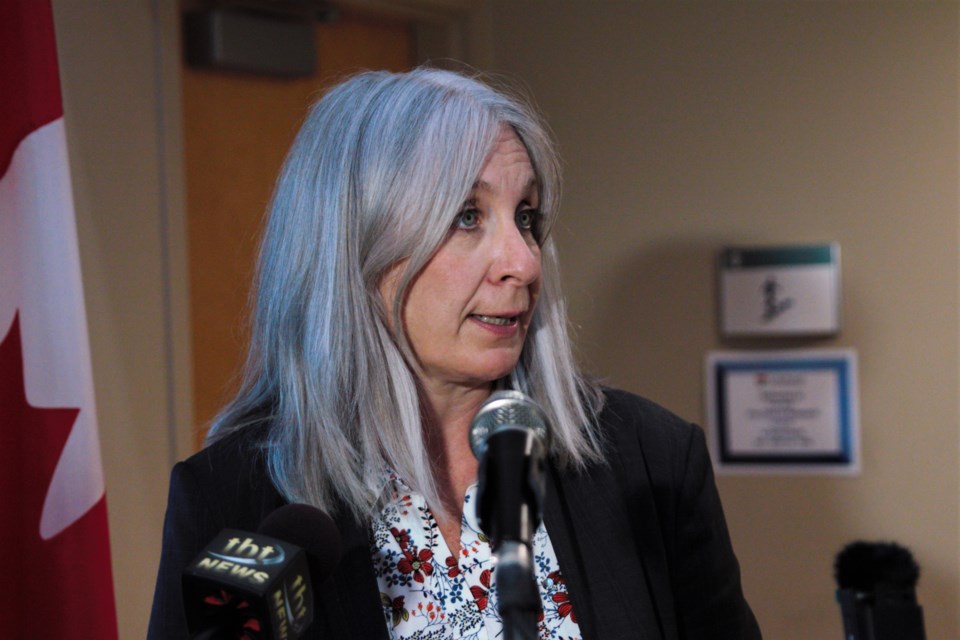THUNDER BAY -- Indigenous Services Minister Patty Hajdu says she accepts the conclusions of a recently released report finding her department is falling short when it comes to supporting disaster preparedness in First Nations.
Canada’s Auditor General, Karen Hogan, delivered a report on emergency management in First Nations on Tuesday.
“Indigenous Services Canada did not meet First Nations’ needs in preparing for and mitigating emergencies,” it concluded. “The department had not addressed problems with preparedness and mitigation that we identified almost a decade ago, when we audited this topic in 2013.”
Hogan found Indigenous Services Canada, responsible for ensuring First Nations have adequate natural disaster preparedness resources, is “more reactive than preventative,” spending over three times as much on response and recovery than on prevention measures.
It’s an approach the auditor general called more costly in the long run, citing a Public Safety Canada estimate that every dollar invested in emergency preparedness can save six dollars in response and recovery costs.
The report also points to a “backlog” of 112 unfunded infrastructure projects First Nations have identified to mitigate emergencies, and that the department itself has determined are eligible for funding, but have not yet been funded.
The auditor general recommended the government address that backlog, gather better information on which communities are most at risk to inform planning, and increase capacity funding to support hiring more First Nations emergency management coordinators.
“I would agree with the auditor general’s assessment,” Hajdu said in a recent interview. “For sure, more funding is needed. We’re in the process of assessing the infrastructure gap [for First Nations], and it’s in the billions and billions of dollars.”
However, the Thunder Bay–Superior North MP also defended her government’s record.
“Indigenous Services Canada is spending historic amounts of money to help communities respond to increasing climate disasters,” Hajdu emphasized – something the AG’s report confirms, with about $828 million spent on First Nations emergency management since 2018.
It’s still not enough to keep up with growing climate risks and decades of federal underfunding of infrastructure on reserve, Hadju said, along with a colonial history that sometimes included relocating Indigenous communities to locations more vulnerable to risks like flooding.
“The challenge for the government … is how do you spend those astronomical sums in responding to climate [disaster], while also trying to address in the case of Indigenous infrastructure, this historic colonial legacy of a huge infrastructure gap, and oftentimes practices that drive to the lowest-quality infrastructure being built,” she said.
Hajdu said the government is focused on supporting “self-determined approaches” by First Nations, one of the reasons she believes “we in some ways have a much better relationship with Indigenous communities and First Nations leaders than any other government before us.”
One example, she said, is how the government supported a plan by Kashechewan First Nation to temporarily move members to a nearby camp during flood risk, rather than evacuating by air to Thunder Bay and other communities hundreds of kilometres away.
The evacuation efforts are necessary because federal officials forced the community to relocate to a flood plain in 1957 – and until a federal commitment to help the community move permanently to higher ground becomes a reality.
Infrastructure work in First Nations often faces challenges including planning capacity, shipping limitations, and limited accommodations for workers, Hajdu added.
That means closing the gap isn’t simply a question of dedicating more federal funding, she said, but also helping First Nations build capacity to address those challenges. She said that involves things like training programs and collaborative planning.
“I think we’re getting to a better place to be able to support that self-determination, but the gap around the fiscal needs, that is significant, and it’s growing," she said. "That is the work that I do as a minister, is to advocate to close that infrastructure gap more quickly.”
